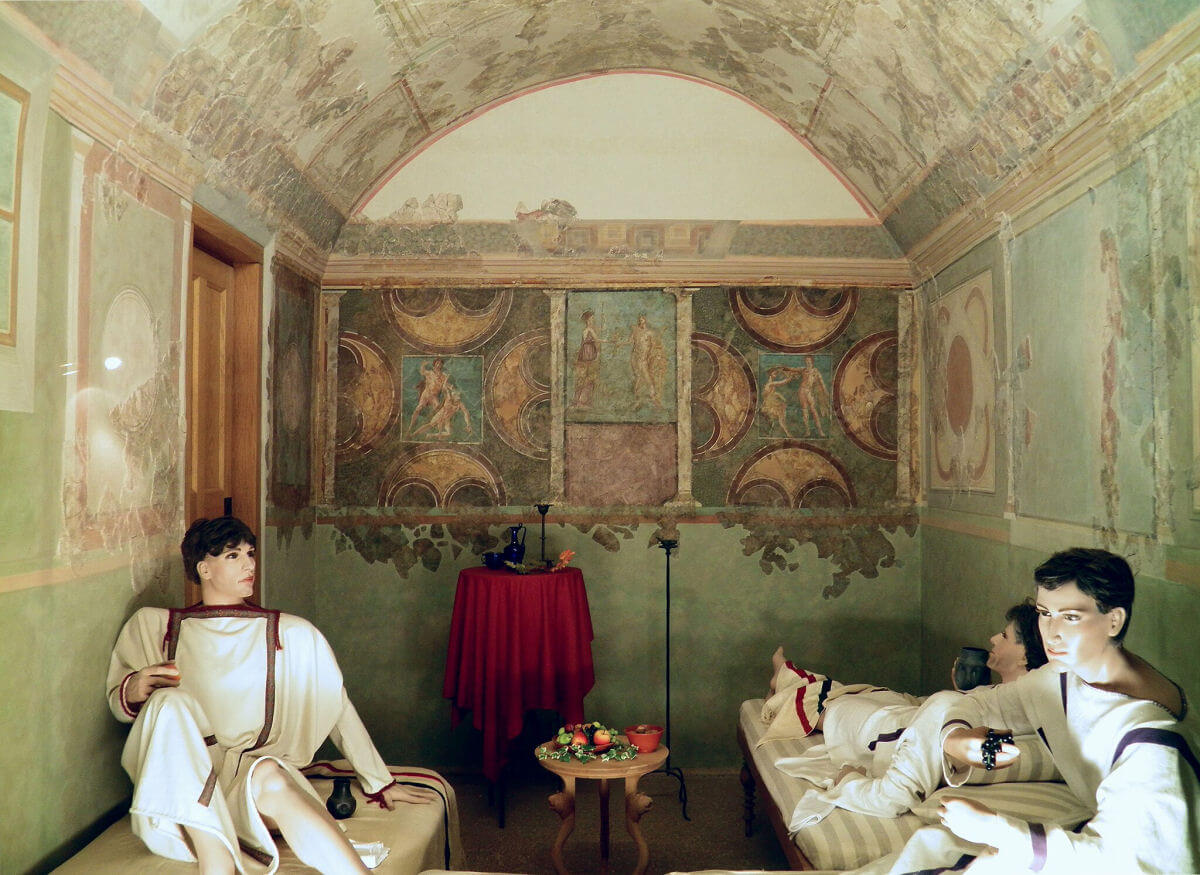
Carole Raddato from FRANKFURT, Germany, CC BY-SA 2.0, via Wikimedia Commons
Introduction
Some social institutions are so basic and universal that it is difficult to imagine human society without them. For example, it may be a bit odd to consider the origins of something like the dining room and dinner parties. However, historians are able to peer back far enough through the annals of history to ascertain the beginnings of this type of practice.
One of the first practices to resemble what we would call the modern dining room is the Roman triclinium, which originated before the time of the Roman Republic.
What is a Triclinium?
The triclinium is a formal Roman dining room, found primarily in the houses and villas of the wealthy members of society. It gets its name from the room's defining feature, which is a square table surrounded by three slightly reclined benches and intended to be used as a dining table. Each diner would actually lay on their side in a semi-reclined position against a pillow as they ate. The fourth side of the table is left open to accommodate serving of food and drink by servants, usually slaves.
Like so many of their social and cultural practices, the ancient Romans adopted the practice of dining in this way from the ancient Greeks, potentially by way of the Etruscans, who had been eating that way since the 7th century BC.
The word ‘triclinium’ comes from the Greek triklinion; tri- means ‘three’ and klinion is a type of reclined couch or chair. As with other adopted habits, the Romans would absorb and refine this practice and make it their own. One immediately obvious difference is this type of luxurious dining was restricted to only men in Greek society, while the Romans placed no such gender restriction on this activity, and even allowed children to eat in their triclinia.
These special dining rooms were very common in the homes of wealthy Romans and would sometimes have several of these square table set-ups to allow for large dinner parties. However, most Roman citizens of the working class were too poor to afford having a triclinium in their homes and lacked the free time to use them anyways, so they would usually dine seated upright.
By the time of the late Roman Republic, the layout of the triclinium had changed somewhat. Instead of three separate reclined benches, a crescent shaped bench that seated up to five guests ran around three sides of the dining table, which was sometimes round in those days. This type of dining arrangement was used up through the Middle Ages and Byzantine period, long after the fall of the Roman Empire.
Roman Dinner Parties
Dining socially in groups was one of the primary social activities and forms of entertainment that the wealthy in ancient Rome regularly engaged in. It was not uncommon for a Roman aristocrat to host twenty guests to dine in his home. These dinner parties would be an almost nightly occurrence that would begin in the late afternoon and go on well into the night.
The movers and shakers of Roman society would use these gatherings to discuss politics, business, salacious gossip, and other subjects that would be just as common at a dinner party in the modern day. The entire spectacle was carefully coordinated with each guest given a particular seat a certain distance from the host based on their social class, general reputation, and standing with the hosting family.
In order to have these social dinners at night, the hosts would need to burn oil to light the triclinium. Lamp oil was a luxury in the time of the Romans, so burning it was a sign of magnanimity on the part of the dinner host. This was another reason that triclinia were out of the reach of the average Roman citizen.
Due to the importance of these dining events, triclinia were also built with enough space for entertainment to take place. Poets, dancers, acrobats, musicians, and other performers would take turns entertaining the wealthy guests. To enhance these entertainment aspects, a triclinium was often decorated with paintings and sculptures to suit the performances. If a nobleman was more inclined to serious epic poetry, his triclinium would likely contain portrayals of heroes and their exploits. On the other hand, if he preferred fun comedic performances, his triclinium would likely have a more whimsical motif.
To have an entire room in a home dedicated to this type of activity was incredibly unique in the time of the Romans, and stands as testament to their level of cultural sophistication.



